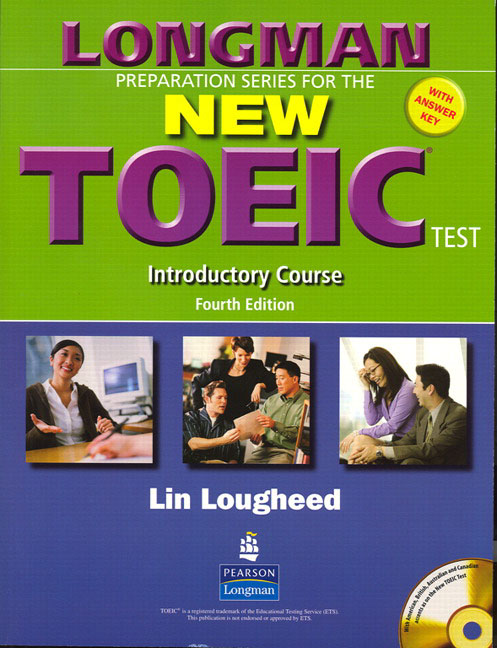Sunday 25 October 2015
Home Study: Practice English with Karaoke
Learning English can be made even more fun by singing. Singing can help you with pronunciation, accent, reading, and listening. You can also build your English vocabulary with more conversation style words, and slang.
So, let look at how you can use karaoke to enjoy learning English.
Thursday 22 October 2015
Grammar Activity: A, An, & The
"A", "An", and "The" are called articles, and they are difficult to use. Let's look at an example paragraph.
Lyon is the third largest city in France. It is near the border between France and Switzerland. There are two parts of Lyon: New Lyon and Old Lyon. Old Lyon is my favourite because of the old, 15th century buildings are beautiful. It is built around Lyon Mountain, so there are many stairways that connect the streets. The cafes in Lyon are famous for their strong coffee, and delicious. On my last day in Lyon, I had an espresso, and a strawberry tart.
Click on "read more" for more information.
Fun In English: Play? Go? Do?
Student: I play swimming every weekend
Teacher: Oh really? You go swimming every weekend?
A common mistake. In some languages, talking about games, sports, and fitness activities is easy. For example, Japanese uses one verb "do":
"I play chess" = chesu shimasu (チェスをします)
In English, we usually use go, play, and do. Which games, sports, or fitness activities do we use them with? Let's look at some examples.
Thursday 15 October 2015
Business English: A Great Textbook for Telephoning In English
As always, there are many textbooks using the phone (smartphone, home phone, etc) in English. In my fifteen years of ESL teaching, "Telephoning in English" is the best for ESL learners who work in an international business.
There's a lot of non-native English speakers, so ESL learners get to listen to accented English. In business, you may often speak to people from Germany, Italy, France, and other non-English speaking countries. Telephoning In English will help you get used to different accents.
Telephoning In English is not easy. The speakers talk more naturally (fast), and, again, have strong accents. This is good because that's what you will hear in real business situations.
Telephoning In English covers taking messages, asking about late deliveries, and more. There's even a unit on ordering a pizza. So, you can practice different types of business telephone conversations.
Study Tip: If you're in an English speaking country, a good way to practice your telephone English skills is to order a pizza. The words you will need are very common (pepperoni is pepperoni in most countries), and it's excellent practice.
You can order Telephoning In English here.
Business English: Answering The Phone & Taking A Message
Communicating on the telephone in a second language is much more difficult than face-to-face conversations. You can't see the other person's face, or body language.
In this post, we'll look at how to greet a business caller in English.
First, let's look at an example of bad telephone manner:
It's one o'clock in the afternoon. Phone rings three times at ABC Company.
Receptionist: Hello.
Caller: Hello? Is this ABC Company?
Receptionist: Yes. What is it?
Caller: May I speak to the sales manager, Bob Jones?
Receptionist: He's not in right now.
Caller: I see. Do you know what time he will be in the office?
Receptionist: Three o'clock. Please call back then.
Caller: Okay. Thank you. Bye.
Receptionist: Thank you. Goodbye.
The grammar in this conversation was fine. So, what communication mistakes did the receptionist make? Think about your answers, then click, "read more".
Monday 12 October 2015
TOEIC: Reading Comprehension & Managing Time
Part 7 of TOEIC is reading comprehension. The October 11th post, we covered grammar in the test. Now, we're going to look at time management, and techniques for completing the reading part of the test.
Group Study: Speaking Games
Studying with classmates, friends, or family can be a lot of fun. Speaking games are great activities for group study. You can practice your English language skills and enjoy a fun conversation with other ESL learners.
You can search online for games that are best for your group's level. ESL Games+ and English Media Lab are two excellent sites for ESL speaking activities and games.
Below are a few games you can easily download, print, and enjoy.
Sunday 11 October 2015
TOEIC: Using Grammar, Vocabulary & Parts of Speech
Parts 5 & 6 of TOEIC, incomplete sentences and error recognition are very difficult because they both test your grammar skills as well as your vocabulary. Reviewing grammar is very important for the test, and (more important) your basic English language learning.
Today, we'll look at techniques to build your vocabulary and improve your grammar.
Saturday 10 October 2015
My Students & I: Socializing
I am a professional, ESL teacher, but, I have always enjoyed socializing with my students. It's fun, of course, but, I can also get to know my students better, and listen to them use English outside the classroom. Students also get more value out of the teacher/student relationship by getting a chance to use English in a more conversational, less formal way.
Below are a few photos from my after-class events with my students (I've lost a lot of weight since these photos were taken).
Business English: Choosing A Private Teacher
Finding A Teacher
In large, international cities like Vancouver, Tokyo, Shanghai, etc, there are many schools, and colleges offering courses in business English. These places are usually very expensive, and often can't create a course of study for your unique needs and goals.
A private instructor is better if you want lessons that are made for you specifically. Today, we'll discuss how you should choose your teacher, and where to find private ESL instructors.
Thursday 8 October 2015
TOEIC Strategies: Short Conversations & Short Talks
In today's post, I will go over strategies for both short conversations (part 3) and short talks (part 4) of TOEIC's listening section.
Monday 5 October 2015
Prepositions In Pictures
Prepositions (on, under, in, etc) are very difficult to understand. Below are a few graphics to explain the meaning of these words, and how they are used.
Prepositions of place and direction
From the English Is Fun Facebook page (there's a link to its page on the right of this blog) the difference between "into" and "in to". If you have a Facebook account, you can find more helpful graphics on English is Fun.
TOEIC Strategies: Question/Response
The Question response section (part 2 of Listening) can be the most difficult part of TOEIC. The questions aren't written down, so you must listen carefully, then choose the correct option (a,b,c, or d).
First, listen the question. What kind of the question is it? There are 2 types of the question;
yes/no questions and wh questions
If the question begin with will,do,does,did,is,are,can,would, etc, the answer will usually be a "yes or no" type.
Be Careful
TOEIC has a lot of "traps" like words with similar sounds, the same words. Also, there are types of answers you must listen for: Indirect and negative responses.
Indirect Answers.
Example:
Man: Who didn't finish their dinner"
Woman: I wasn't hungry.
or
Woman: Have you invited anyone I know to the party?
Man: You know everyone on the guest list.
Negative Responses
Example:
Man1: So, which car do you like?
Man2: Well, not the one that looks like
a taxi.
Woman1: What movies do you like?
Woman2: Anything that doesn't have snakes.
Remember: there's about 7 to 10 seconds between questions in the listening part of TOEIC. Answer quickly.
You can practice the Question/Response section here.
Saturday 3 October 2015
Teaching Your Children English: The Internet
For English language learners with children, below are some websites you can use to teach your kids at home.
Teaching In Japan: Kids' Lessons
You will see in my profile that I spent 15 years teaching (and living) in Japan. I am an English conversation/business English. My students over the years were aged 2 to 90.
Kids' lessons are challenging in that they need more preparation time, materials, and a lot of patience. Teaching children is also fun, and, in its own way, very easy. Being there and having a good time is 99% of the job. Below are just a few of the students I was lucky to teach.
TOEIC Strategies: Photographs
The first part of of the listening section for TOEIC is photographs. You will hear four sentences and must choose which sentence is best for the question.
Let's practice with the photo below:
If you're going to write the paper test, the best thing to do is arrive early, and look at the questions (but don't start the set time). This will help you make better choices when you're are writing the exam.
The options you will hear in this section are usually very basic sentences. Look at the photo. Note the possible nouns (people, places, and things), verbs (actions), and prepositions (in, on, under, etc).
Now, read the four sentences below, and choose the best answer.
a) The student is studying for a test
b) The student is reading a book
c) The library doesn't have any tables
d) There's a memo on the wall.
Continue reading for the answer.
Thursday 1 October 2015
TOEIC: Preparation Textbooks & The Web
The Test of English for International Communication, better known as TOEIC is a very common test for those wishing to work or study in an international setting. In Japan, many companies have their employees take TOEIC at least once a year; the results can determine a worker's promotion prospects, job assignments, etc.
TOEIC has two parts: listening and reading.
Listening has four sections: photographs, question/response, short conversations, and short talks.
Reading has three sections: incomplete sentences, text completion, and reading comprehension.
The top score in TOEIC is 990.
To prepare for the test, there are several texts you could use. However, in my experience, The Longman Preparation Series For The New TOEIC Test is the best of them.
There are texts available for people new to TOEIC, and people who have taken it before. The books cover all parts of the test, and provide strategies on each one. There is also a text of practice tests.
You can order the Longman TOEIC books on Amazon or find them (for free) at your local library.
The Internet has many, many sites that help to prepare students for TOEIC. The first is http://examenglish.com. It's free, but, it's not easy. All practice tests are the same as real test conditions. You can pause the tests if you need to, and replay questions.
YouTube is a great resource for English learners. I encourage ESL students to use it as much as possible, especially for listening, intonation, and pronunciation exercises.
The TOEIC test is very difficult. Native English speakers don't get perfect scores on it. Preparation and home study will help you complete the test, and improve your scores.
Next post will have techniques on how to do part one of TOEIC, pictures.
TOEIC has two parts: listening and reading.
Listening has four sections: photographs, question/response, short conversations, and short talks.
Reading has three sections: incomplete sentences, text completion, and reading comprehension.
The top score in TOEIC is 990.
905 - 990 International Proficiency
785 – 900 Working Proficiency Plus
605 – 780 Limited Working Proficiency
405 – 600 Elementary Proficiency Plus
255 – 400 Elementary Proficiency
185 – 250 Memorised Proficiency
10 – 180 No Useful Proficiency
To prepare for the test, there are several texts you could use. However, in my experience, The Longman Preparation Series For The New TOEIC Test is the best of them.
There are texts available for people new to TOEIC, and people who have taken it before. The books cover all parts of the test, and provide strategies on each one. There is also a text of practice tests.
You can order the Longman TOEIC books on Amazon or find them (for free) at your local library.
The Internet has many, many sites that help to prepare students for TOEIC. The first is http://examenglish.com. It's free, but, it's not easy. All practice tests are the same as real test conditions. You can pause the tests if you need to, and replay questions.
YouTube is a great resource for English learners. I encourage ESL students to use it as much as possible, especially for listening, intonation, and pronunciation exercises.
The TOEIC test is very difficult. Native English speakers don't get perfect scores on it. Preparation and home study will help you complete the test, and improve your scores.
Next post will have techniques on how to do part one of TOEIC, pictures.
Subscribe to:
Posts (Atom)


















